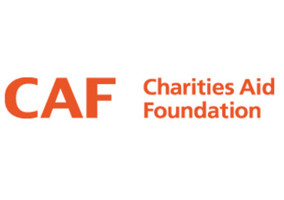The UK’s top 100 charity fundraisers received £3bn in restricted funds in one year, with restricted funding making up 90 per cent of earned income at five charities, according to new research from technology provider Xledger.
It examined annual reports for the 100 top fundraisers in the UK, noting the split between unrestricted and restricted earnings.
Restricted funding is income that must be used in accordance with specific conditions imposed by donors or that have been raised by the charity for particular purposes.
Several charities received more than 90 per cent of their earned income last year in restricted funding. Of the fundraisers, more than a quarter recorded restricted income of 50 per cent or more.
‘Restricted funds come with an obligation’
Jo Sutton, head of operations at Xledger, said: “Although no charity would ever turn down money, unrestricted funds are highly prized by organisations, simply because these can be directed to multiple areas, depending on where they are most needed at the time.
“Not only this, but restricted funds come with an obligation to prove that the money has been spent correctly, and if your income is largely restricted, that’s a huge burden of cost. You’ll need a larger team on your accounts, creating more work in the back office.”
Yet many charities earn less than 5 per cent of their money through restricted funds. The Donkey Sanctuary had only 2 per cent in restricted funds, and Barnardo’s and St John Ambulance just 3 per cent.
Rebecca Mauger, director of fundraising, St John Ambulance said: “Restricted income has previously been less of a priority for St John and our unrestricted income has given us greater flexibility to choose the best ways we can support our life saving work and volunteers. However, we have significant ambitions to grow our fundraising so in time this will change and we will be raising more through restricted funds for the priorities that form part of our new organisational strategy.”
Restricted funding connected to particular services
Certain organisations receive restricted funding because of the nature of the projects the deliver. For example, if the organisation administers some form of drug they may get a set amount of money especially reserved for that drug. Sightsavers received restricted funds from DFID Aid Match, Big Lottery Fund and others.
A spokesperson for Sightsavers, which earns 90 per cent of its income in restricted funding, said: “Sightsavers maintains a healthy ratio of unrestricted and restricted income. Each are useful as long as you maintain the flexibility to deliver on your mission and to allocate funds to where they are most needed. We receive high value gift in kind donations to support our neglected tropical disease programmes, but our core income remains very balanced.”
A total of 15 charities listed are managing over £50m in restricted funding. These include some of the larger aid charities, including Human Appeal International, Islamic Relief Worldwide and Save The Children.
Islamic Relief Worldwide earnt 92 per cent of its income in restricted funding, according to Xledger.
Waseem Ahmad, director of programmes at Islamic Relief, said: “An unusually high proportion of Islamic Relief’s funding was restricted in 2019 because our work was dominated by our extensive response to the major conflicts in Yemen and Syria – the kind of emergencies to which donors usually respond with specific earmarked donations.
“We are working hard to increase levels of unrestricted income in order to be able to direct more funds towards our strategic priorities outside of major emergencies. Over time we hope to be able to raise more unrestricted income and to invest in more in long-term programmes to lift people out of poverty.
“We also call upon bilateral institutional donors to play their part in providing more unrestricted thematic funds as well as more funding to help strengthen civil society institutions in the global south.”
Aid charities: ‘High levels of restricted funding, in itself, is no bad thing’
Mike Wright, director of communications and membership services at Bond, said: “Many development and humanitarian aid charities rely on high levels of restricted funding. In some respects, this reflects that sheer number of restricted funding opportunities that are open to NGOs – UK government, international governments, global philanthropists, the EU (for the moment), UN Institutions and so on – that are not available to the rest of the UK charity sector.”
Given this, he said “high levels of restricted funding, in itself, is no bad thing - not all NGOs have a support base that can provide balancing funding from individual giving - but such funds needs managing carefully.”
Wright added that Bond has seen “some significant falls just recently in restricted funding to some agencies, such as World Vision and Save the Children - in part, due to there being fewer humanitarian or emergency grant situations”. He said “there may be some fall out in terms of EU funding as a result of Brexit.”
He said: “The fact is that organisations need to be smart about how they manage restricted funding, ensuring that their operating costs are covered and are not subsidised by unrestricted sources, that they are realistic with donors about the results that can be achieved, and that there are no unwelcome legacies in terms of staffing and costs when programmes come to an end.
“All organisations in our sector need to be thinking about their business model – ensuring that they are not overly reliant on single sources of income, and looking to build a portfolio of restricted and unrestricted income sources. Above all, seeking funds that fit directly with their vision and mission.”
|
Related articles












